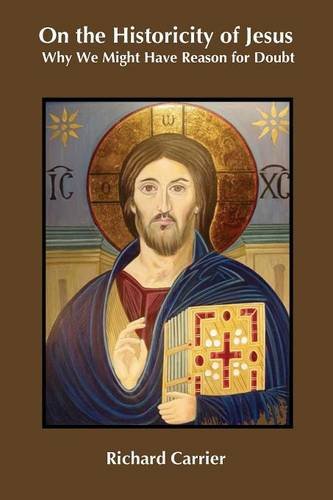
Chapter 2
Haile Selassie, who died in 1975, is considered a god by the Rastafarians, despite his objections. Here we have an example of a historical person being deified and myths about him being invented quite rapidly. If the historical record were lost and we were only left with the myths, we couldn’t be sure if Haile Selassie existed or not. Is this what happened with Jesus?
We have far less evidence for Jesus than we do for Alexander the Great and other ancient figures, so if Jesus did exist, he would have been a relative nobody. The evidence we have for Jesus is similar to the evidence we have for the Old Testament Daniel: a collection of sayings and narratives including interactions with historical people. However, Daniel is not considered a historical person. The Jesus from the Book of Revelation dictates letters and issues pithy sayings, but is not assumed to be historical, while the Jesus of the gospels is.
Historicism is just as speculative as mythicism. Both construct theories about Jesus which are possible, without bothering to determine which theory is the most probable. There are dozens of different historical Jesuses, but at most, only one of them can be true.
Perhaps counter-intuitively, if you add an unproven assumption to a theory to make it more probable, you actually make it less probable. For example, if you add an assumption that’s only 50 percent likely to your theory, it will cut the probability of your overall theory in half. So a minimal theory which includes the fewest possible unproven assumptions will be the most likely to be true.
Since 1 out of every 26 men living in ancient Judea was named Jesus, Pilate likely crucified dozens of men with this name. Several of the earliest Christians would have been named Jesus as well. When we say Jesus existed, we don’t simply mean one of the earliest Christians had this name or that Pilate crucified somebody with this name, we mean something more.
The question is if the gospel version of Jesus has any basis in fact. Since the gospels contradict each other and are full of miracle stories, we know the entirely of the gospels can’t be true, but are there any historical facts sprinkled in the gospels?
At minimum, what we mean when we say Jesus existed is that an actual man at some point named Jesus acquired followers who continued an identifiable movement after his death, some of his followers claimed he was executed by either the Jewish or Roman authorities, and some of his followers began worshiping him as a god. This is the theory of minimal historicity that Carrier will compare with minimal mythicism.
Chapter 3
The Ascension of Isaiah, a Christian document composed around the same time as the canonical gospels, describes Jesus descending from the seventh heaven all the way down to the firmament above earth to be crucified by Satan and his angels before ascending in glory. (Some manuscripts include Jesus having a life on earth, but these sections are written in a different style and are likely later additions.)
People of this time believed the firmament had trees and everything else you find on earth, as well as archons who fight for control of the earth. This idea is also found in the epistles of Paul and Hebrews. (Paul even seems to paraphrase The Ascension of Isaiah in 1 Corinthians 2:7-10.) Many ancients believed the realm of the dead wasn’t underground, but up above in the firmament.
The Ascension of Isaiah is similar to the Descent of Inanna. She too descends seven levels from heaven, shedding garments at each stage, until she reaches the realm of the dead where she is killed and resurrected three days later. Jeremiah and Ezekiel attest that the Jews were familiar with Inanna’s story.
So far, no biblical scholar has adequately addressed mythicism, at best only disproving theories of certain mythicists. But as with historicity, the most likely version of mythicism to be true is the minimal theory with the fewest unproven assumptions.
At minimum, Jesus not existing entails that Jesus Christ was originally thought to be a celestial deity who communicated only through dreams, visions and other forms of divine inspiration. He was originally believed to have endured an ordeal of incarnation, death, burial, and resurrection in a supernatural realm. An allegorical story placing Jesus in earth was then told and subsequent worshipers came to believe he existed as a historical person. This is the theory of minimal mythicism that Carrier will compare with minimal historicity.
Good reading your posst
LikeLike